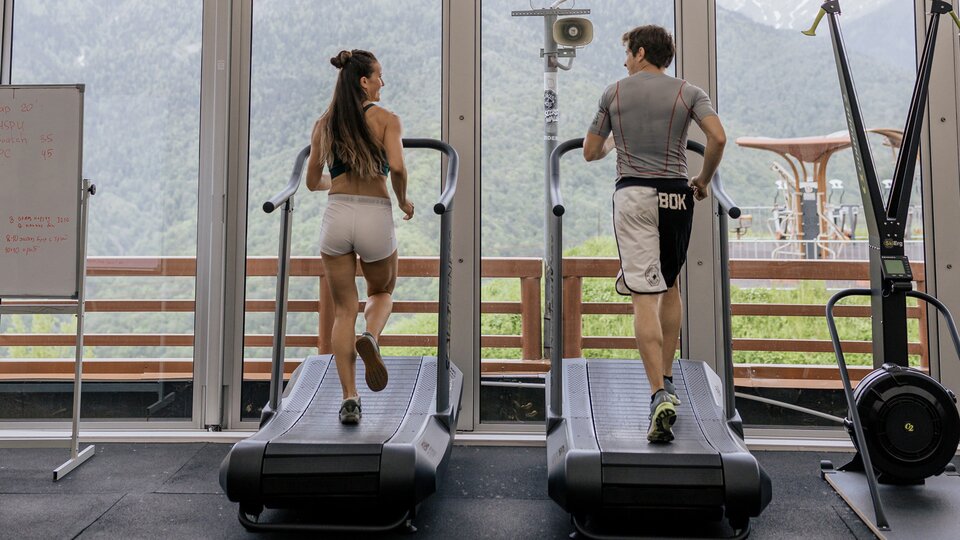Although steady state cardio can be great for your overall health, it probably isn’t the most effective way to lose weight. Here are four reasons why you should start your weight loss journey through diet and lifting weights instead of slaving away on a treadmill.
Reason #1: Doing Cardio Doesn’t Burn That Many Calories
Doing cardiovascular exercise can help you improve your oxygen consumption, heart rate, and short term calorie expenditure. However, it is very hard to get a calorie deficit for weight loss solely through cardio. In a 2011 meta analysis of 14 different studies with over 1,800 participants found that aerobic exercise was not an effective weight loss therapy for overweight or obese individuals [1]. For example, if you are a 175 lb man you can burn around 400 calories with 30 minutes of treadmill running at 6mph.
After your workout, you leave the gym, you feel hungry, you eat a 300 calorie protein bar and now you are left with only a 100 calorie net loss for the day. Since humans need to burn 3,500 calories to lose one pound of weight, you would need to run everyday for 35 days to lose a single pound. That is a lot of hours spent for very little return investment. So if you are currently doing hours of cardio and not seeing results, maybe it’s time to switch to some weight training.
Reason #2: Cardio Plateau
When an untrained person starts doing cardio, that person can immediatley see some promising results because their calorie expenditure has substantially increased. After several weeks, that person may hit a weight loss plateau because their body has now adjusted to this new routine. Over time, your body burns less calories with the same workout because your heart becomes stronger, your breathing becomes more efficient, and muscles use less energy to do the same amount of work [2]. Therefore, you have to continually increase the intensity or duration of your cardio session to lose weight. At some point, that may not be sustainable.
Reason #3: Too much cardio can have the opposite effect
While most people might not do too much cardio, the effects of overexertion and under recovery from cardiovascular exercise may increase your risk of injury, inhibit muscle growth, lower your metabolism, and even cause your body to store more fat. After intense exercise, your body releases the hormone cortisol to put your body in a recovery state. With adequate rest, your body will return to baseline.
However, some people can become obsessed with burning calories and losing weight which can lead to multiple days, weeks, or months of overtraining and an increased risk of injury [3]. When the body is stressed and cortisol levels are high, studies have shown it to inhibit muscle growth, disrupt sleep patterns, increase hunger signals, and gain excess fat especially in the stomach area [4]. In order to counteract these negative effects, adding in rest days and strength days can help you achieve your weight loss goals.
Reason #4: Resistance training can burn more calories than cardio in the long term.
Resistance training such as weight lifting can be a much more effective weight loss tool than cardio. By increasing your muscle mass, you can increase the amount of calories you burn at rest which makes it easier for you to have a calorie deficit [5]. A 2015 study found that resistance training burned at least as many calories as steady state cardio when they measured the post-exercise oxygen consumption (EPOC) over the subsequent 24 hours after working out.
They hypothesized that resistance training would burn more overall calories possibly due to the muscle breakdown and protein synthesis [6]. Since lifting weights can burn as many calories as traditional cardio, it may greatly help you with your weight loss goals.
Conclusion
The optimal method for losing body fat would be to do cardio, high intensity interval training, weight training, and eating a balanced calorie restrictive diet. My advice for setting yourself up for weight loss success would be to start weight training first and then adding cardio to your program.
Citations
- https://pubmed.ncbi.nlm.nih.gov/21787904/
- https://www.ncbi.nlm.nih.gov/pmc/articles/PMC8834821/
- https://www.ncbi.nlm.nih.gov/pmc/articles/PMC3435910/
- https://www.omicsonline.org/open-access/overtraining-exercise-and-adrenal-insufficiency-2165-7025.1000125.php?aid=11717
- https://digitalcommons.wku.edu/cgi/viewcontent.cgi?article=2051&context=ijes
- https://www.tandfonline.com/doi/abs/10.1080/02701367.2014.999190?journalCode=urqe20&cookieSet=1
